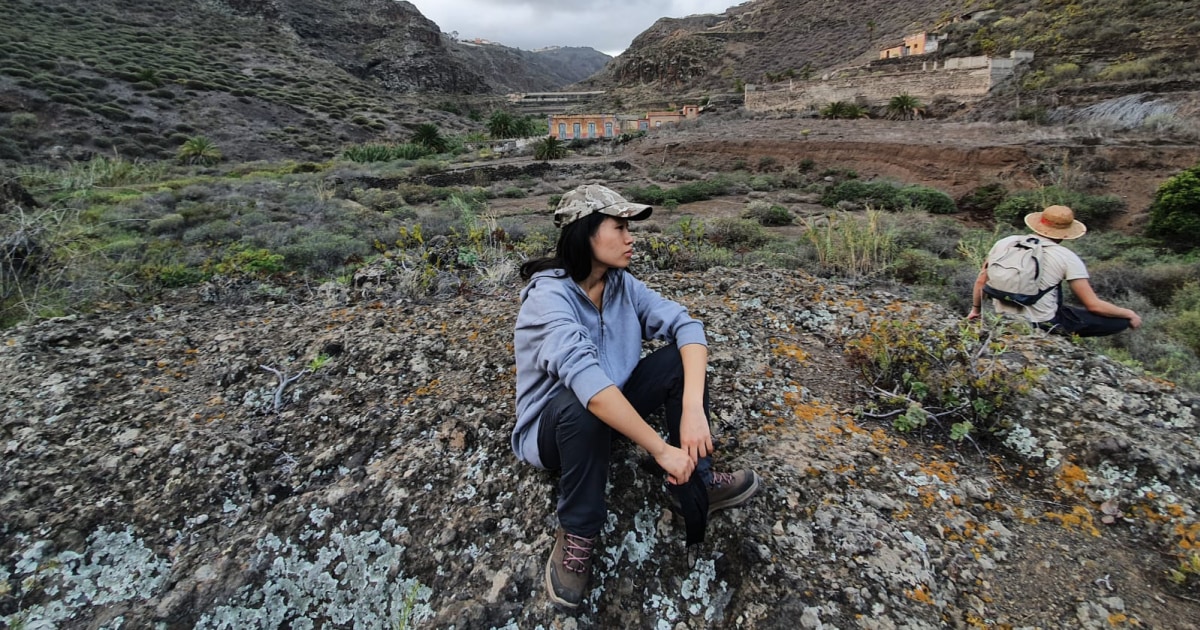Yilin Ye, a student from Anji, in the eastern province of Zhejiang, China, is spending time abroad at the University of Zaragoza, Spain.
Ye, 25, said he started learning Spanish after hearing about his “excellent reputation”. She said she feels she takes on a slightly different personality when she speaks Spanish.
“It’s a really beautiful, really fascinating thing,” she said. “When I speak Chinese, I am calmer. When I speak English, I am probably a little more open, and when I speak Spanish, I am very ‘wow’.”
In addition to reading comics by the Argentine-Spanish cartoonist Quino, Ye likes to watch TV shows and films in Spanish, such as “Três metros Sobre el Cielo”, “Ocho Apellidos Vascos”, “Motorcycle Diaries” and “Elite” from Netflix . “
A scroll by DouYin, the original Chinese version of TikTok launched in 2016, shows many users who are not afraid to show off their language skills. They include Chinese Gen Y lip sync videos and English mashups – and showing their growing love for Spanish and Latin culture.
How popular is the second most popular spoken language in the world in China? The numbers speak for themselves.
There are about 50,000 Spanish speakers in China, a number that scholars say is growing every year. The language became more popular as students enthusiastically shared their new knowledge on social media.
“The Spanish language is causing waves in China,” said Lu Jingsheng, author and national Spanish coordinator for the Chinese government, in an interview.
Lu, who teaches at the University of International Studies in Shanghai, said the university previously offered only English, Japanese and Russian as second languages. But that changed in 2017 with the addition of new programs and electives.
As Spanish grows in popularity, many Chinese students see learning as an advantage as they prepare for Gaokao, a national college entrance exam that typically lasts two days and takes nine hours to complete. Students generally choose to take the test in Spanish or English for the foreign language part of the test.
Ye’s enthusiasm for language and culture is not uncommon, especially among young people, said Lu. “We try to create an atmosphere that accompanies the culture of the language.”
From Zumba videos to makeup tutorials – en español
Media and entertainment play an important role in learning languages for the generation of the Chinese millennium. Some dedicated entire DouYin channels to the Spanish language with vlogs and makeup tutorials.
For those who find it difficult to roll the robust Spanish Rs, content creators comically suggest gargling a little water to mimic the rapid movements of the tongue.
Lulu Yang, a Spanish teacher and DouYin’s rising star – she has more than 10,000 followers – said her journey began after she took her first elective Spanish classes. Yang, 28, who is originally from Beijing, said her father encouraged her to start learning.
“Nowadays, in China, English is very common and more and more people know it,” she said. “Without Spanish, I feel that I would be a very ordinary person and that I would have a very ordinary job, but because of the Spanish, I have already made many trips and visited many cities.”
Yang, who lived in Spain and traveled to Cuba for work, launched his DouYin account in February last year, when he had more free time during the pandemic.
“I just wanted to try and I didn’t think I could grow up” so much, she said. “And then I thought, ‘OK, I can go on.’ I wanted to share my experiences. “
From wearing Latin inspired jewelry, such as large hoops and gold cross necklaces, to dancing along with Latin rhythms and remixes, young people in China are embracing a culture that is bold, loud and a little different from their own.
Yang said he likes to post Zumba-style dance videos to his personal DouYin account, adding that he likes to listen to Shakira, Luis Fonsi and other artists. Using a well-known Chinese language, 能歌善舞 (néng gē shàn wǔ), Yang said that those who speak Spanish are generally “people with many talents”.
“If you’re the type to study [a language] really difficult, so you definitely have an open mind, alive and lively. You like to get in touch with new things, “said Yang.” Everything I know, every job opportunity or love story I have, is thanks to my Spanish. “
Scott Xia, another content creator and professor at DouYin, who has nearly 3 million fans on the platform, said he also had unique opportunities because of his fluency in the Spanish language.
Xia, 29, from Chengdu, Sichuan, started learning Spanish seven years ago, depending mainly on platforms like Duolingo, Netflix and YouTube in the beginning. He used to use Netflix to watch some of his favorites again with audio and subtitles in Spanish.
“I like ‘Dragon Ball Z’ and, as I’ve seen, I already knew a lot of the content,” said Xia. “I made these connections automatically and I didn’t have to work hard to understand them” in Spanish.
He said that now that he works as a teacher, the main reason he posts educational content is because it cheers him up.
“Doing these things makes me very happy, because I like to learn languages,” said Xia. “I can take these experiences with me and share them with everyone.”
Xia also worked as a sailor, which allowed him to travel to Mexico and other places in Latin America.
“Take a look at a map. There are many Spanish-speaking countries. If you speak Chinese, English and also Spanish, then you are basically covering all your bases – there is no place you cannot go.”
follow Latin NBC on the Facebook, Twitter and Instagram.
